178 years is a long time, but it’s certainly not the oldest watch company, and nowhere near the oldest jeweller. And yet, perfect Cartier replica watches has accumulated one of the densest and most revolutionary histories of any luxury brand. In an attempt to distil it all into a single coherent experience, this is the history of Cartier across its risky beginnings, a breakdown of the three famous Cartier brothers, and how the Cartier we know came to be.
Cartier’s surprisingly violent origins
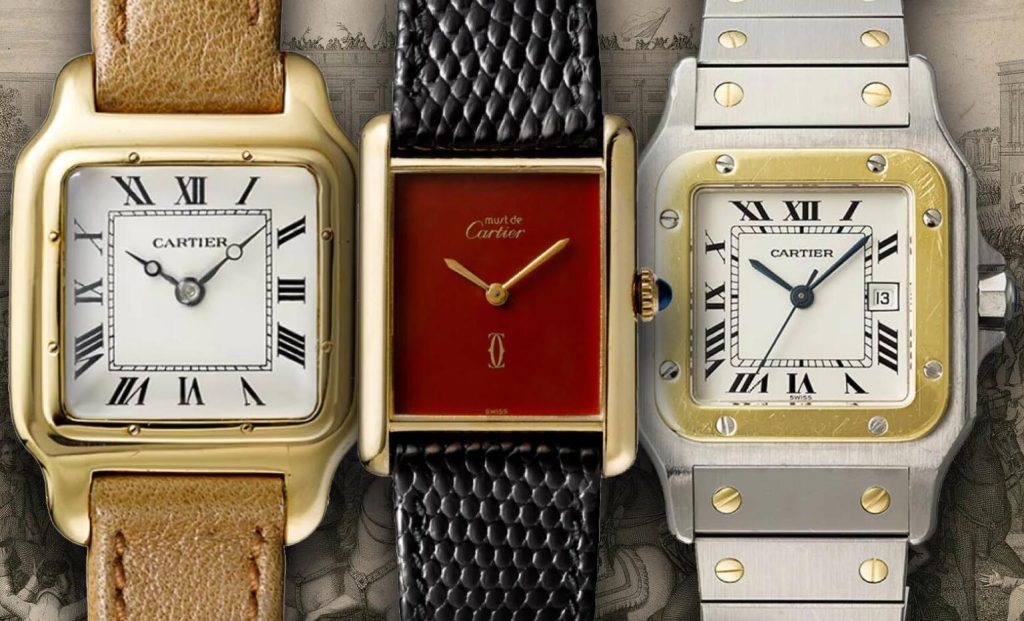
It’s easy to say that UK AAA Cartier fake watches was founded in 1847, but there’s so much more to the story. Louis-François Cartier was the eldest son of a metalworker who had lived a tough life. Having been captured during the Napoleonic Wars, Pierre Cartier was even once imprisoned in one of Portsmouth’s floating prison hulks before making it back to Paris in 1815 and finding employment. The oldest of Pierre’s five children with his wife Elisabeth, Louis-François took up a jewellery apprenticeship with Adolphe Picard who owned a shop on Rue Montorgueil, but that still wasn’t as glamorous as it sounds. Post-revolutionary Paris was still fraught with revolts and street fights on a regular basis, and the tension between the upper and working classes never fully abated. Apprentices were kept in line by the threat of whipping, but the value of a skilled trade can’t be underestimated.
1847 was the year Louis-François Cartier took over Picard’s business and renamed it Cartier, and despite the revolution that established the short-lived French Second Republic, Cartier managed to grow its business relatively smoothly. One of its earliest big successes was gaining Princess Mathilde, niece of Napoleon Bonaparte, as a client in 1856, which allowed the company’s name to spread through high society. Best quality UK replica Cartier watches‘ growing wealth was such that it was able to purchase an even more famous jewellery business called Gillion, and the two names merged for a few decades. Louis-François’s own son also joined the business, and the young Alfred Cartier cut his teeth in a rather brutal, but business-savvy fashion.
As the 1870 Siege of Paris witnessed a bloody Prussian invasion, signalling the end of France’s military dominance and over 24,000 Parisian deaths, Alfred Cartier used money from the family business to buy jewels from aristocratic families at risk of exile or death. As they were desperate for money to help them escape France quickly, they accepted low prices. He would then travel over to England and sell them to the English upper crust for a tidy profit during a self-exile in London for two years. Alfred officially took over from Louis-François in 1874, and while the Cartier Gillion company continued to soar towards the 20th century with his leadership, the international expansion that defines the luxury Cartier copy watches we know today was yet to come. That was the product of Alfred’s three sons – Louis, Pierre, and Jacques.
Louis Cartier in Paris
The Cartier family tree is huge, but Louis Cartier is by far the most famous member. As the most senior son, he stripped the Gillion name back from the business and opened up its first Parisian luxury boutique at 13 Rue de la Paix in 1899, near Place Vendôme. Louis was an innovator and a pioneer in jewellery, merging the lavish neo-classicism of the Belle Époque’s Art Nouveau with solid platinum settings that hadn’t really been seen before. The first uses of platinum in jewellery were seen in the 1870s, but it was only used for prongs to hold diamonds in place. Top replica Cartier watches‘ specific alloy of platinum was strong enough to hold delicate, lace-like patterns or other important things while wearing or not wearing. Its white lustre and low reactivity mean it never tarnishes, and it is generally more durable than gold. The “Garland style” tiaras, necklaces and other ornaments were dazzlingly bright and heavy, setting a precedent from which all 20th-century jewellery was built.
Jacques and Pierre Cartier in London
Just a few years after the Paris boutique opened, Pierre Cartier cut the ribbon on a new branch in London at 4 New Burlington Street. There were already plenty of reasons to open a London boutique, but the deciding factor was King Edward VII, who was a huge fan of the brand. That may even be an understatement, as he gave Cartier the generous title of “jeweller of kings, and the king of jewellers”, which is about the best marketing you could ever achieve. He had ordered 27 tiaras from Cartier for his coronation in 1902, and the firm received a Royal Warrant from Edward VII in 1904. This didn’t just open it up to English royalty, but also exporting jewellery to aristocracy in Spain, Thailand, and Russia, among others. Meanwhile, Jacques was finding (or even creating) trends based on his travels to India and Egypt, and marketing exotic products based on what he saw. An example is the Tutti Frutti collection that uses arrays of colourful gemstones rather than the pure white diamonds that his older brother Louis preferred. In 1909, Pierre flew to form Cartier’s New York branch and left Jacques behind to take control in London.
Pierre Cartier in New York
You would never say it out loud to a Frenchman or Englishman, but Paris and London aren’t worlds apart in distinction. They’re both historic cities with thousands of years of uninterrupted settlement, and they’re also geographically very close. New York City, on the other hand, was a relatively new beast, and one with a very different kind of ruling class. Still, the wealthy socialites of the city had been placing orders with Swiss made fake Cartier watches since the 1850s, and the city’s rapid growth and power made it a prime target for Pierre Cartier to open up a shop at 712 Fifth Avenue in 1909.
Without any royal connections, Pierre had to do substantial legwork to get his name heard in the right circles. He even bought the mansion that became the boutique with a double string of natural pearls, because the owner’s wife wanted them. It all paid off big time when he handled the sale of the Hope Diamond in 1911. That was a US$189,000 deal, equivalent to over $6M in today’s money, not to mention the dreaded curse that kept the diamond in heavy gossip rotation…
The watchmaking of Cartier Paris
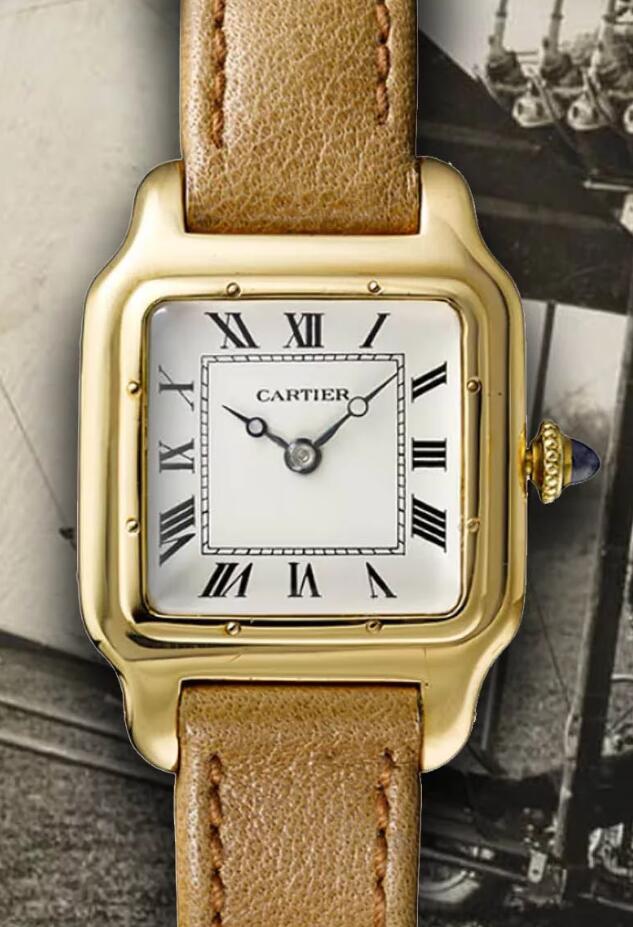
Although Cartier had truly become a global brand by 1910, the three main branches of Paris, London, and New York were operated with a substantial degree of independence. Each of the brothers made their own connections through international travel, and they decided on their own directions for their products – while maintaining a commendably consistent aesthetic across all of Cartier’s efforts. As the 20th century beckoned, so too did the advent of wristwatches. While Pierre and Jacques clearly had strong business acumen, Louis was the most prolific designer of the family. He was friends with the Brazilian aviator Alberto Santos-Dumont, who had requested a watch to be worn on the wrist while flying, and he was all too happy to comply. “Wristlets” adapted from pocket watches had been around for a few decades, but the Cartier Santos-Dumont was the first purpose-built wristwatch in a truly modern sense of the word. It wasn’t available for sale to the public until 1911, but even then, it was a game changer. The first public 1:1 China super clone Cartier wristwatches collection to be released was the Tonneau, named after its barrel-like shape.
Around 1912, a clockmaker at the Cartier Paris branch, Maurice Couët, was inspired by a magician (and a watchmaker, also) named Jean-Eugène Robert-Houdin to create Cartier’s first mystery clock. The idea was to use a transparent dial which made the hands appear like they were floating in thin air, and Louis Cartier’s high-concept designs led to some incredible examples of both clockmaking, jewellery making, and lapidary work. Those kinds of clocks still inspire mystery dials today, including the modern Cartier Masse Mystérieuse which places the entire movement within a winding rotor. Louis Cartier really couldn’t be stopped when it came to watch designs. The first Panthère used diamonds and onyx for its signature animal appearance in 1914, and the Tank of 1917 essentially needs no introduction. Other designs from Louis’ mind include the Tortue, Parallelogram, Baignoire, Cloche, and many more odd shapes that became legendary.
The watchmaking of Cartier London
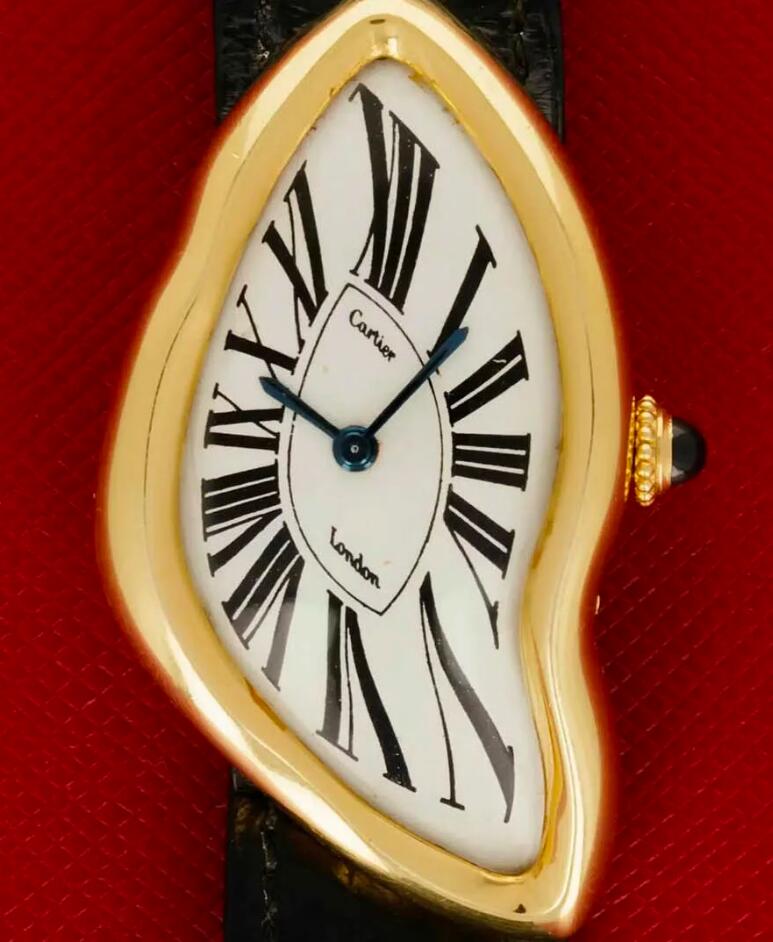
Up until 1966, Cartier London imported all of its watches from the ones made in Switzerland and France. But Paris’ time was fading as Europe’s darling, and London thrived in the wake of the swinging ‘60s and all of the British Invasion bands who came with it. London had to become the leader, and Cartier London needed to be making all of its own products. Working with the case manufacturer Wright & Davies, each was made by hand and was perfectly imperfect as a result. Among the London-born designs were the Baignoire Allongée, the Pebble, the Tank Asymétrique based on Louis Cartier’s Parallelogram from the ‘30s, and of course, the Cartier Crash replica watches wholesale UK.
It’s surreal to accept that one of the most desirable fake Cartier watches for sale in the world is one that’s been intentionally deformed, but it’s kind of like the high luxury version of wearing ripped jeans. There’s a fun myth floating around that the design was inspired by a client’s watch that had partially melted in a fiery car accident, but it was actually created as a joint effort between Jean-Jacques Cartier (the son of Jacques Cartier) and designer Rupert Emerson. It’s hard to describe what’s so attractive about it, other than the complete rejection of traditional standards for beauty. It’s messy and lighthearted, but confident too. Given the hand-made nature of the London workshop’s watches, vintage examples are now exceedingly rare and valuable.
The end of the Cartier family dynasty
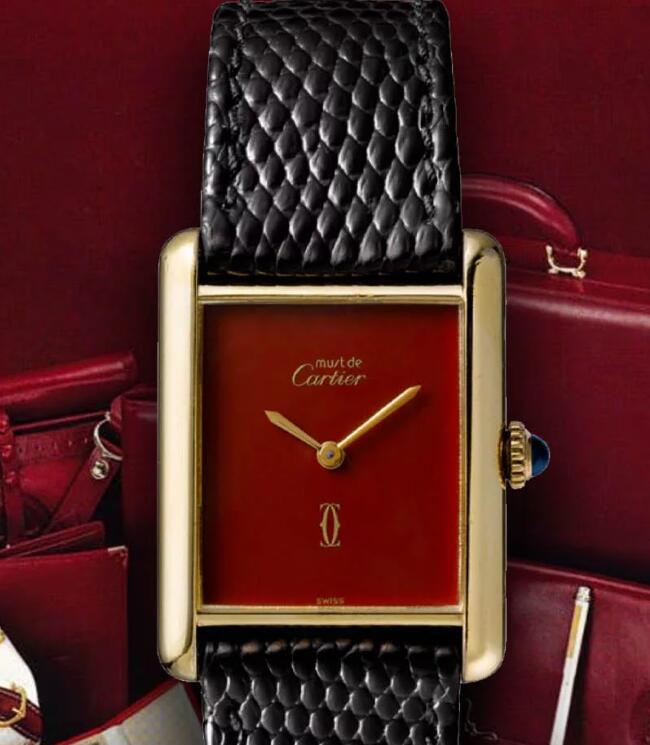
Jacques and Louis Cartier passed away in 1941 and 1942 respectively, and while their sons Jean-Jacques and Claude Cartier took over their branches for a solid length of time, the death of Pierre Cartier allowed the company to become a modern business as opposed to an eccentric group of brothers. The late ‘60s hit hard financially, and whether they knew it or not, the quartz crisis was on its way. A businessman named Robert Hocq led some investors to purchase Cartier Paris in 1972, before purchasing both of the London and New York companies too. Then, in 1979, the differentiation between cities was no longer an official consideration as Cartier Monde spoke to the world as one.
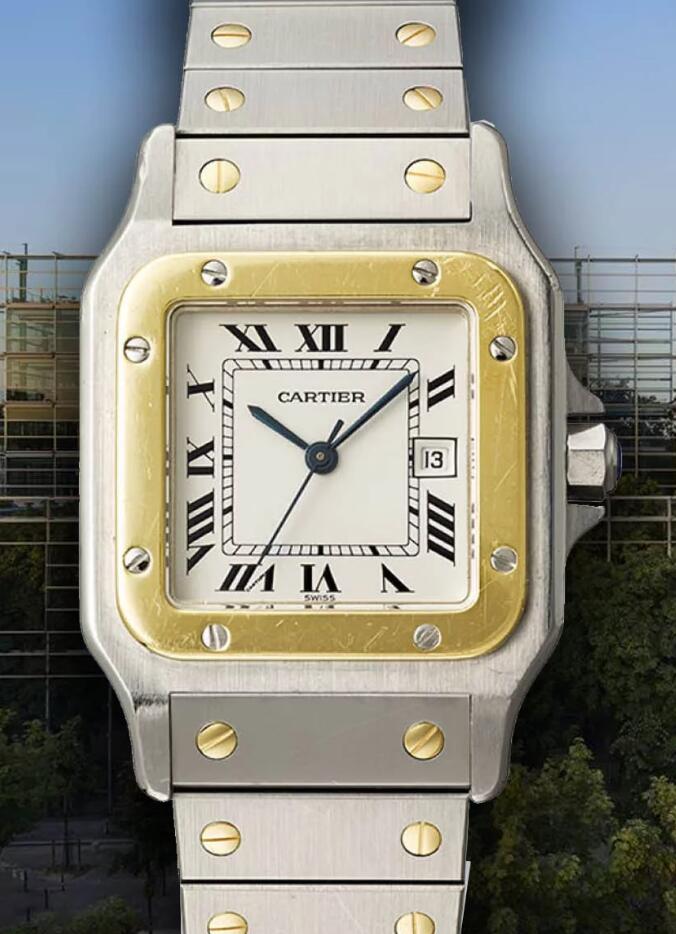
During the Hocq period, Cartier’s designers never slowed down. Sports watches became more of a focus, but evidently still at a luxury level. The modernised Santos de Cartier with its two-tone bezel and screwed bracelet hit stores in 1978, one year after the Must de Cartier replica watches shop UK introduced the concept of affordability to a Cartier catalogue for the first time. Although the three brothers were gone and their families had all but cashed out, the Cartier design language was so strong that fantastic watches just kept on coming. There was the square Panthère de Cartier in 1983, the Pasha de Cartier in 1985, and the Tank Française in 1996. 1993 was when a subsidiary of the Richemont Group acquired the majority of Cartier shares, which Richemont reclaimed in 1998. 2012 was when the deal was finalised, and Richemont purchased all of the remaining shares.
The Cartier of today
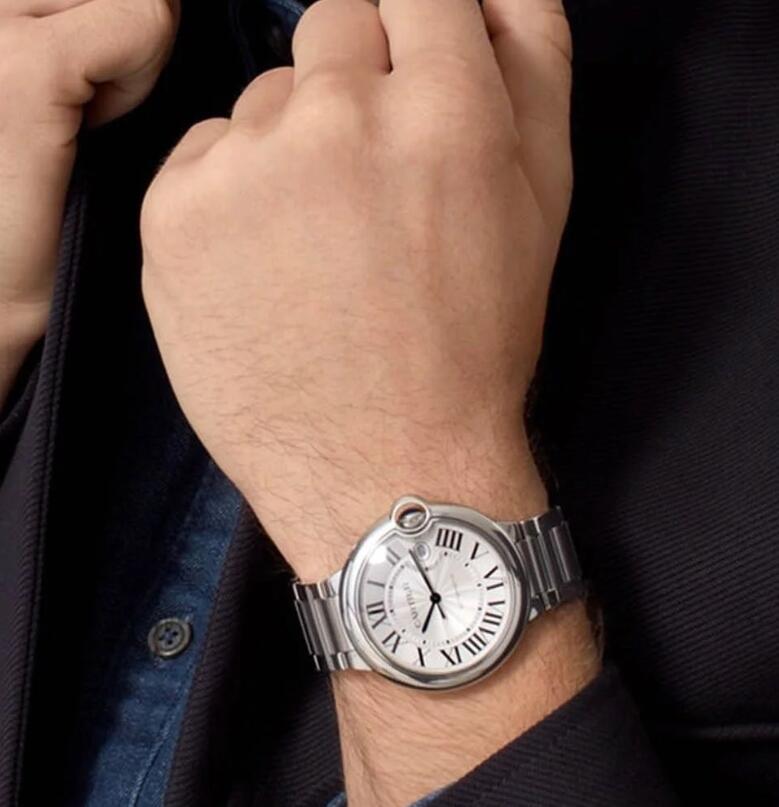
Most of Cartier’s watch catalogue includes shapes that are now historic to the brand, but the Swiss movements Ballon Bleu de Cartier replica watches is one of the very few to be released within the last 20 years. Breaking out of every preconceived notion, the Ballon Bleu has a pebble-like round case and short, stubby lugs. The crown guard is also a gorgeous detail, and having the crown eat into the 3 o’clock marker is just enough eccentricity to keep things fresh. It also happens to be one of China 2025 copy Cartier’s best-selling watches now, although the Tank is omnipresent and the Santos-Dumont has been having a big comeback in style lately. Cartier has found a brilliant balance between ingenuity and accessibility, and that’s something I respect greatly. Whether it’s a century-old Art Deco masterpiece or a modern, highly-complicated watch that’s too delicate to leave the house.